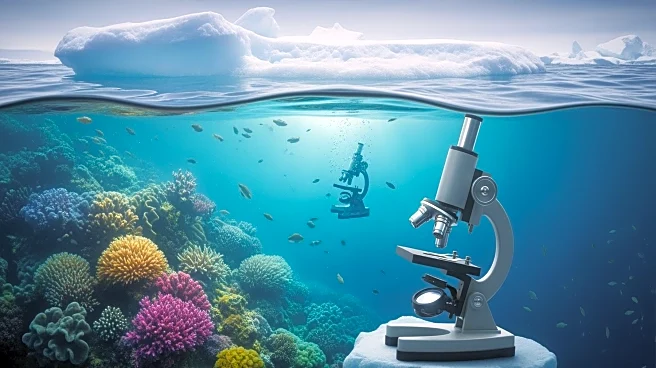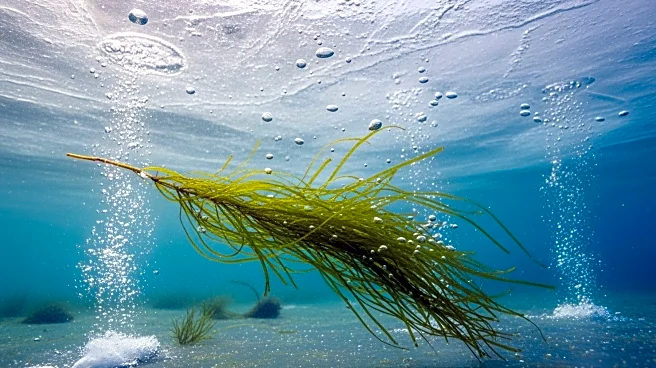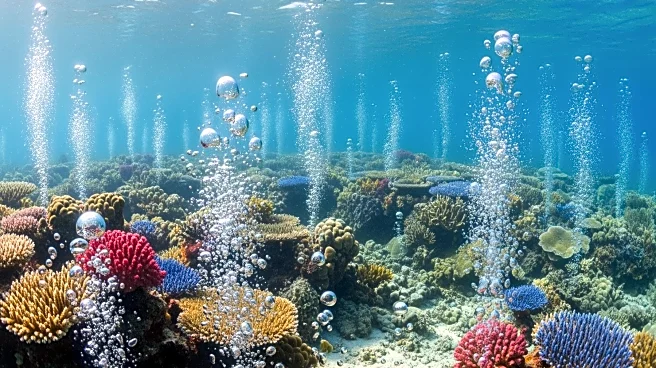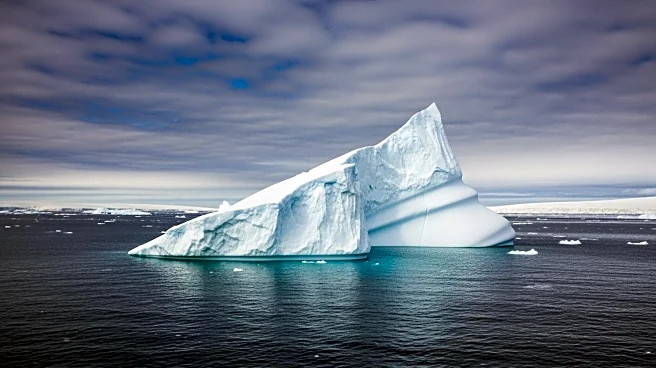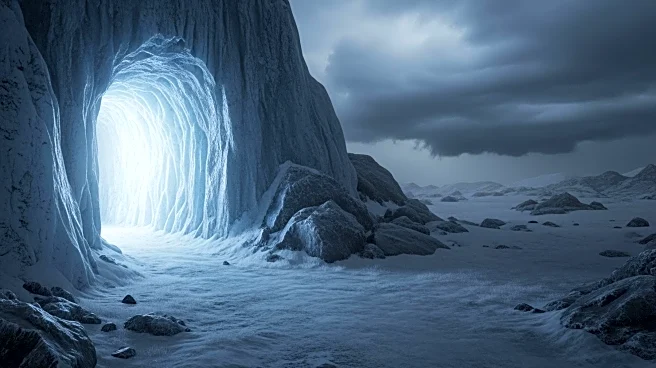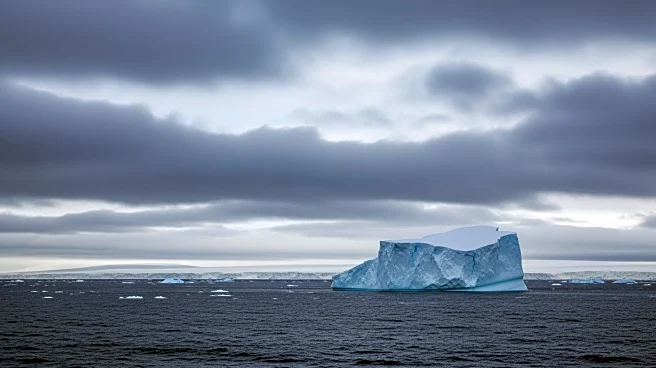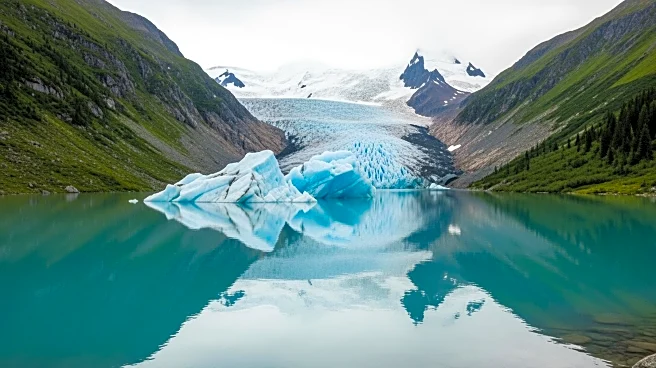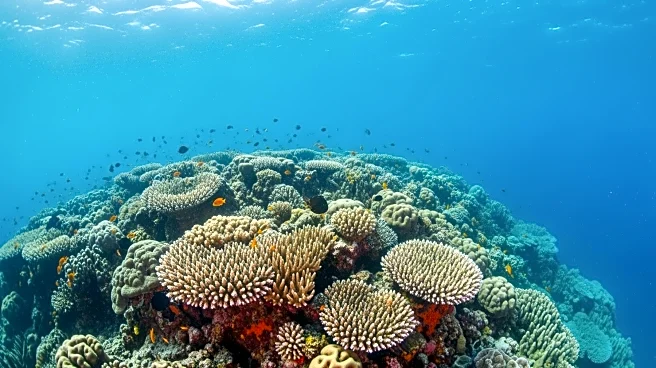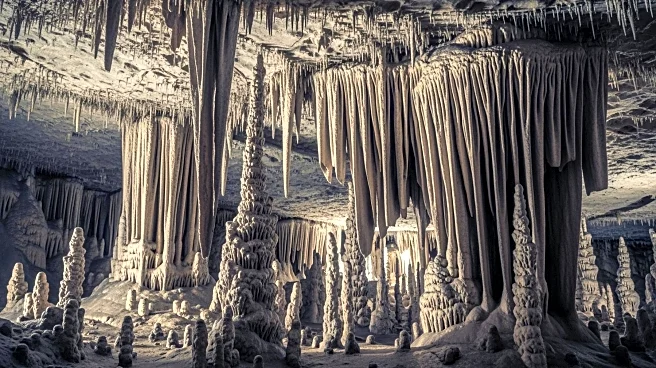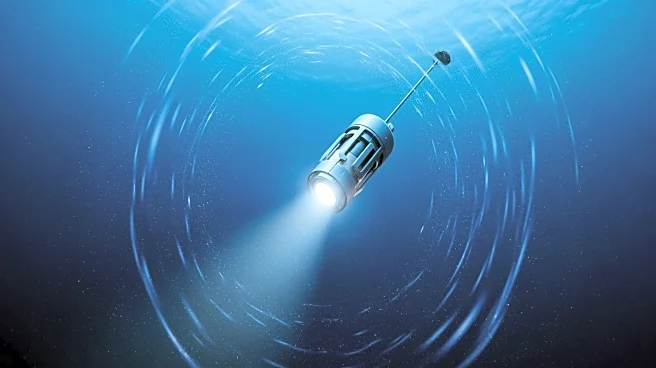What's Happening?
Researchers have uncovered a hidden world of nitrogen-fixing bacteria beneath the Arctic ice, which could significantly impact the region's marine ecosystems. The study, led by the University of Copenhagen,
reveals that these bacteria, unlike the usual cyanobacteria, thrive under the ice and transform nitrogen gas into ammonium, enriching the ocean with nitrogen. This process supports algae growth, which forms the foundation of the Arctic's marine food web. The discovery challenges previous assumptions that nitrogen fixation could not occur under the ice due to poor living conditions for the organisms involved. The highest rates of nitrogen fixation were found along the ice edge, where melting is most intense, suggesting that as climate change accelerates ice retreat, more nitrogen could enter the ecosystem.
Why It's Important?
The presence of nitrogen-fixing bacteria beneath the Arctic ice could reshape predictions about the region's ecological balance and climate feedbacks. Increased nitrogen availability may boost algae production, which is crucial for the marine food chain, supporting small animals and fish. Additionally, more algae could enhance the Arctic Ocean's ability to absorb carbon dioxide, potentially mitigating climate change effects. However, the complexity of biological systems makes it difficult to predict the net impact on the climate. The study emphasizes the need to include nitrogen fixation in models forecasting the Arctic's future as sea ice continues to decline.
What's Next?
The researchers suggest that nitrogen fixation should be considered in future models predicting the Arctic's ecological and climate dynamics. As the ice continues to retreat, the expanding melt zone could allow more nitrogen to enter the ecosystem, potentially increasing algae production and CO2 absorption. Scientists will need to further investigate the long-term implications of these findings and how they might influence global climate models. The study calls for continued research to understand the full impact of nitrogen fixation on the Arctic's marine life and climate.
Beyond the Headlines
This discovery highlights the intricate connections between climate change and marine ecosystems. The role of non-cyanobacteria in nitrogen fixation under the ice challenges existing paradigms and underscores the importance of considering lesser-known biological processes in environmental predictions. The findings could lead to a reevaluation of how Arctic ecosystems function and their role in global climate regulation. As the Arctic continues to warm, understanding these dynamics becomes increasingly critical for developing effective climate strategies.
